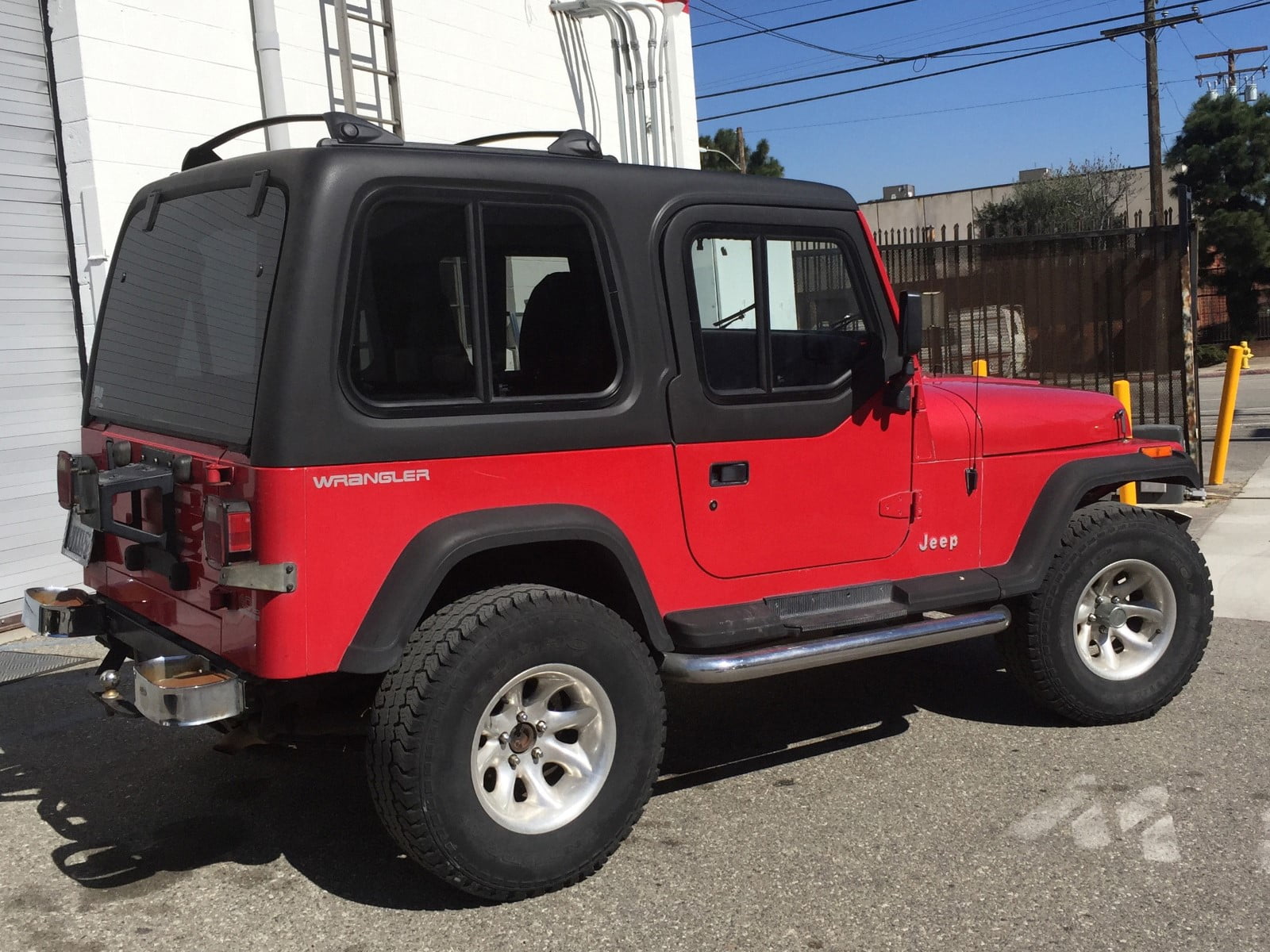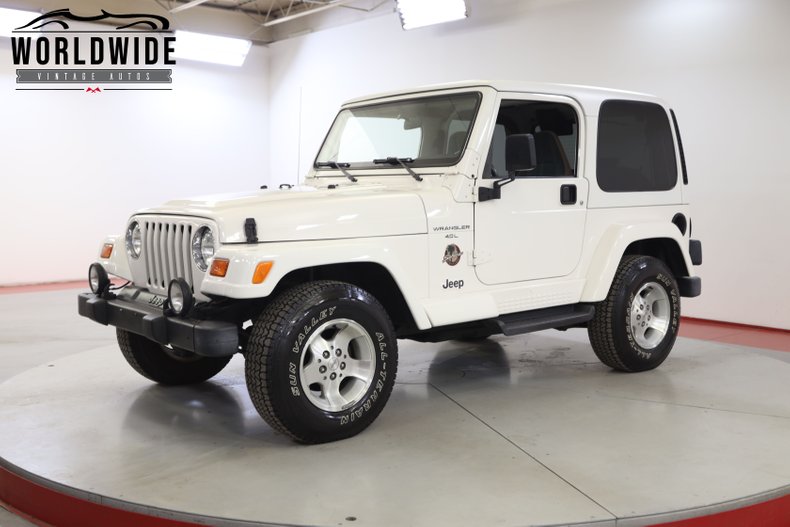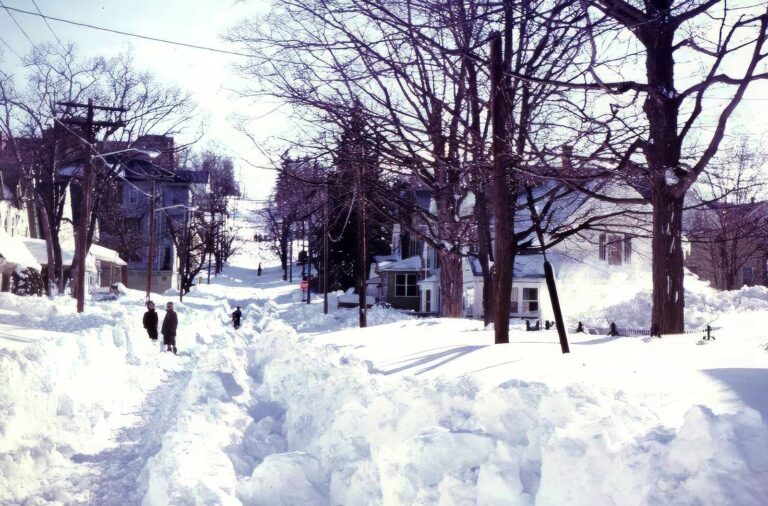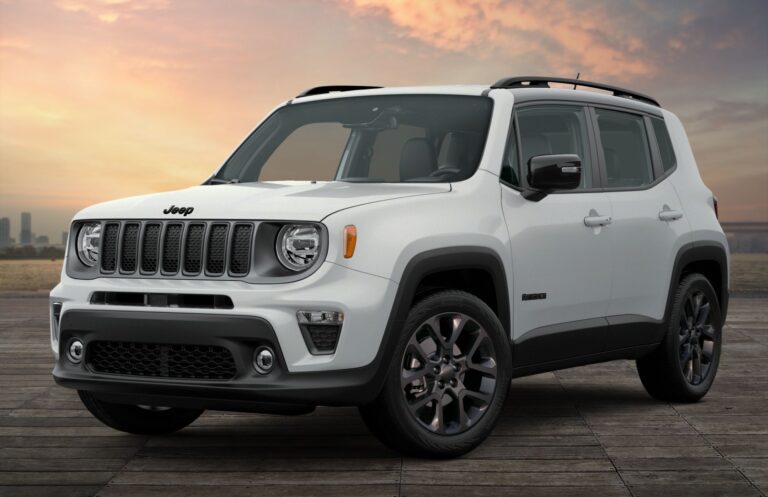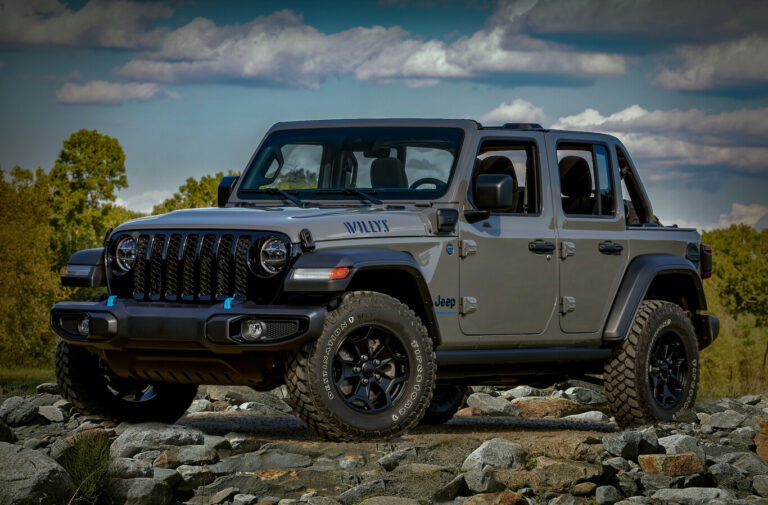1999 Jeep Wrangler Hardtop For Sale: A Comprehensive Buyer’s and Seller’s Guide
1999 Jeep Wrangler Hardtop For Sale: A Comprehensive Buyer’s and Seller’s Guide jeeps.truckstrend.com
Introduction: Unearthing an Off-Road Legend
The year 1999 holds a special place in the hearts of Jeep enthusiasts, marking a pivotal period for the iconic Wrangler TJ generation (1997-2006). Far more than just a vehicle, the 1999 Jeep Wrangler embodies a spirit of adventure, rugged capability, and timeless design. When you encounter a "1999 Jeep Wrangler Hardtop For Sale," you’re not just looking at a used car; you’re eyeing a piece of American automotive history, renowned for its legendary off-road prowess, surprising on-road comfort (thanks to its coil-spring suspension, a significant upgrade from its YJ predecessor), and an unparalleled aftermarket support ecosystem.
1999 Jeep Wrangler Hardtop For Sale: A Comprehensive Buyer’s and Seller’s Guide
The distinction of a hardtop model adds a layer of practicality and security often desired by those seeking to balance daily driving with weekend escapades. Unlike its soft-top siblings, a hardtop offers enhanced weather protection, superior noise insulation, and a greater sense of security against theft. This article serves as a comprehensive guide for anyone considering buying or selling a 1999 Jeep Wrangler Hardtop, delving into its unique characteristics, what to look for, and how to navigate the market effectively.
Why the 1999 Jeep Wrangler TJ? A Timeless Icon Endures
The TJ series, produced from 1997 to 2006, is widely regarded as one of the best Wrangler generations. The 1999 model year benefits from several years of production refinement, making it a reliable and robust choice. Its most significant engineering leap was the abandonment of leaf springs in favor of a coil-spring suspension system on all four corners. This change dramatically improved ride quality and handling on pavement while maintaining, if not enhancing, its legendary off-road articulation.
Aesthetically, the 1999 TJ retains the classic round headlights and seven-slot grille that define the Wrangler’s heritage, a nod to its military ancestors. Under the hood, the venerable 4.0-liter inline-six cylinder engine, a powerplant celebrated for its bulletproof reliability and ample torque, was a standard offering in most trims, alongside a less common 2.5-liter four-cylinder option. The TJ’s simplicity, robust construction, and vast availability of aftermarket parts contribute to its enduring appeal and make it an ideal platform for customization or a dependable daily driver for the adventurous soul.
The Hardtop Advantage: Practicality Meets Unyielding Durability
While the open-air experience of a soft top is quintessential Jeep, the factory hardtop on a 1999 Wrangler offers distinct advantages that appeal to many owners:
- Enhanced Security: A hardtop provides significantly better protection against theft and vandalism compared to a canvas soft top, offering peace of mind for owners who park their Jeeps in less secure areas or store valuable items inside.
- Superior Weather Protection: During colder months, heavy rain, or snow, the fiberglass hardtop offers excellent insulation, keeping the cabin warmer and drier. It also eliminates concerns about leaks, rips, or wear common with aged soft tops.
- Reduced Cabin Noise: The rigid structure of the hardtop considerably dampens road and wind noise, making highway travel more comfortable and allowing for easier conversations or enjoyment of the stereo.
- Durability and Longevity: Unlike soft tops that degrade over time due to sun exposure and weather elements, a hardtop is built to last the lifetime of the vehicle with proper care.
- Improved HVAC Efficiency: With better insulation and a sealed cabin, the air conditioning and heating systems work more efficiently, providing a more comfortable interior climate.
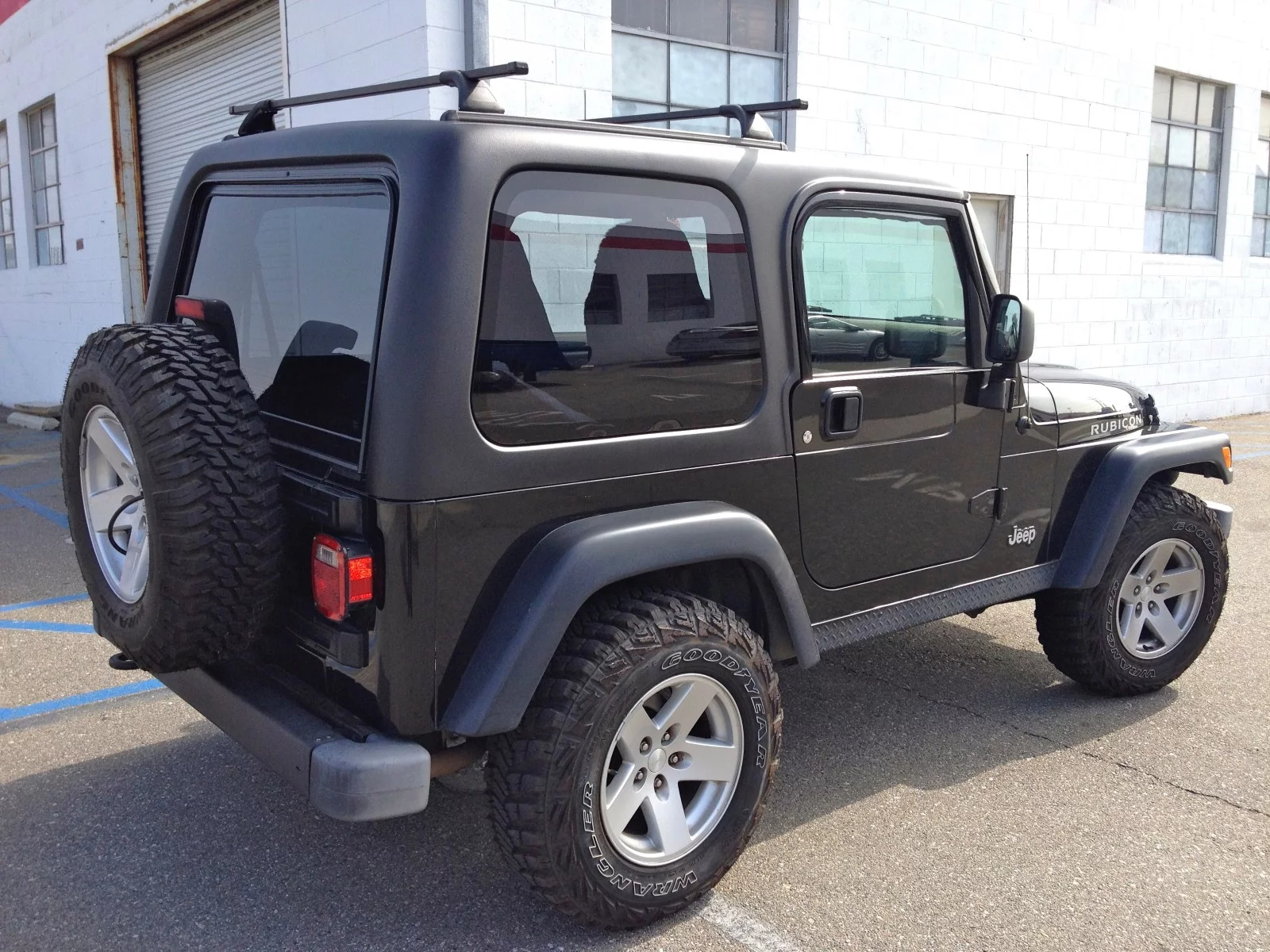
However, owning a hardtop also comes with considerations. It is heavy and requires at least two people (or a specialized hoist system) to remove and store. This means spontaneous open-air driving isn’t as simple as flipping a latch. For those who enjoy both experiences, many owners opt to have both a hardtop for winter/security and a soft top for summer.
Key Specifications and Critical Inspections for Prospective Buyers
When considering a 1999 Jeep Wrangler Hardtop for sale, understanding its core specifications and knowing what to meticulously inspect are paramount to making a wise investment.
Key Specifications:
- Engine:
- 4.0L AMC Inline-6 (181 hp, 222 lb-ft torque): Highly desirable for its power, longevity, and legendary reliability. Most common and sought-after.
- 2.5L AMC Inline-4 (120 hp, 140 lb-ft torque): More fuel-efficient but less powerful. Often found in SE trim models.
- Transmission:
- 5-Speed Manual (AX-15 / NV3550): Robust and popular for off-roading.
- 3-Speed Automatic (32RH): Simple, durable, but less fuel-efficient.
- Transfer Case: NP231 Command-Trac (part-time 4WD).
- Axles:
- Front: Dana 30
- Rear: Dana 35 (standard); Dana 44 (optional, more robust, highly desirable)
- Suspension: Coil spring (front and rear).

Critical Inspection Points:
The TJ Wrangler, while robust, is susceptible to certain issues, primarily due to age and environment.
- Frame Rust: This is the most critical inspection point. Check the frame thoroughly, especially around the skid plate mounts, control arm mounts, and rear sections (behind the rear wheels). Look for flaking, holes, or significant pitting. Minor surface rust is often manageable, but severe rot is a deal-breaker.
- Body Rust: Inspect rocker panels, floorboards (under the carpet), fender flares, and door sills.
- Fluid Leaks: Check under the vehicle for oil leaks (rear main seal, oil pan), transmission fluid, transfer case fluid, and differential leaks.
- Suspension Components: Look for worn bushings, sagging coil springs, and leaky or worn shocks. Test drive to feel for excessive bouncing or clunking.
- Steering System: Check for excessive play in the steering wheel. Inspect the track bar, tie rods, and ball joints for wear.
- HVAC System: Ensure the heater and air conditioning work correctly. Heater core issues are somewhat common.
- Electrical System: Test all lights, gauges, power windows (if equipped), and radio.
- Previous Modifications: Many Wranglers are modified. Assess the quality of any lift kits, oversized tires, or aftermarket accessories. Poorly installed mods can lead to accelerated wear or safety issues.
- Hardtop Condition: Inspect the hardtop for cracks, deep scratches, or signs of water leaks around the seals. Check the rear window operation and defroster (if applicable).
- Service History: Request maintenance records. A well-documented history indicates a caring owner.
Pricing Your 1999 Jeep Wrangler Hardtop: What to Expect and How to Value
The price of a 1999 Jeep Wrangler Hardtop can vary significantly based on several factors. Both buyers and sellers should consider these elements to ensure a fair transaction.
Factors Influencing Price:
- Overall Condition: This is paramount. A rust-free, well-maintained Jeep will command a premium. Minor rust or mechanical issues will significantly lower the price.
- Mileage: Lower mileage typically translates to a higher price, assuming condition aligns.
- Engine Type: Models with the 4.0L inline-six engine are generally more valuable than those with the 2.5L four-cylinder due to power and demand.
- Transmission: While personal preference varies, automatic vs. manual usually doesn’t create a huge price disparity unless one is in significantly better condition.
- Trim Level: Sahara, Sport, and SE trims had different standard features. Sahara models, with their more upscale interiors and body-color flares, often fetch slightly more.
- Aftermarket Modifications: Quality, desirable modifications (e.g., well-installed lift kit, quality winch, upgraded axles) can add value. However, extreme or poorly executed modifications can deter buyers or even reduce value.
- Geographic Location: Prices can fluctuate based on regional demand and climate (e.g., rust-free Southern/Western Jeeps often command higher prices nationwide).
- Market Demand: The overall popularity of TJs at any given time can influence pricing.
Pricing Resources:
- Kelley Blue Book (KBB) & NADAguides: Use these as starting points, but remember they are general guides and may not fully capture the nuance of a specific Wrangler’s condition or modifications.
- Online Marketplaces: Browse current listings on sites like Craigslist, Facebook Marketplace, AutoTrader, and specialty Jeep forums (e.g., JeepForum.com, WranglerForum.com). This provides the most accurate real-time market data for your area.
Table: Estimated Price Ranges for 1999 Jeep Wrangler Hardtop (USD)
| Feature/Condition | Engine | Mileage Range | Condition Assessment | Estimated Price Range (USD) | Key Notes |
|---|---|---|---|---|---|
| Premium Example | 4.0L I6 | < 100,000 miles | Excellent (Minimal/No Rust, Pristine Body, Well-Maintained) | $12,000 – $18,000+ | Rare find. Often garage-kept, meticulously cared for. May have tasteful, high-quality modifications. |
| Good Daily Driver | 4.0L I6 | 100,000 – 150,000 | Good (Minor Surface Rust, Solid Frame, Well-Running) | $7,000 – $12,000 | Most common range. Expect some cosmetic imperfections. Mechanicals should be sound, or minor repairs needed. |
| Budget-Friendly / Project | 4.0L I6 | 150,000+ | Fair (Moderate Rust, Mechanical Issues Possible) | $4,000 – $8,000 | Requires some work (rust remediation, component replacement). Good for DIY enthusiasts. Major frame rust significantly reduces value, potentially to salvage/parts only. |
| Entry-Level (4-Cylinder) | 2.5L I4 | Any | Good to Fair (Similar condition scale to 4.0L) | $3,000 – $7,000 | Less powerful, but can be a good value for those not needing high performance or heavy off-roading. Price typically $1,000-$3,000 less than comparable 4.0L models. |
| Hardtop Value Add | N/A | N/A | N/A | +$500 – $1,500 | The presence of a factory hardtop, especially in good condition, generally adds value compared to a soft-top-only model due to its practical benefits. |
Note: These prices are estimates and can fluctuate based on specific vehicle history, aftermarket parts, local market conditions, and the seller’s urgency. Always conduct thorough research and a pre-purchase inspection.
Practical Advice and Actionable Insights
For Buyers:
- Prioritize Rust Inspection: Seriously, this cannot be overstated. Get under the Jeep with a flashlight. Probe suspected areas. If you’re unsure, walk away or get a professional opinion.
- Pre-Purchase Inspection (PPI): Invest in a PPI by an independent mechanic who specializes in 4x4s or Jeeps. This small investment can save you thousands in future repairs.
- Test Drive Thoroughly: Engage 4WD (high and low), check for fluid leaks after the drive, listen for abnormal noises from the engine, transmission, transfer case, and axles. Test all gears, brakes, and steering.
- Budget for the Unexpected: Even a well-maintained 1999 vehicle will eventually need repairs. Set aside a contingency fund.
- Don’t Rush: There are many TJs out there. Be patient and wait for the right one.
For Sellers:
- Be Transparent About Condition: Honesty builds trust. Disclose any known issues, rust spots, or mechanical quirks. It’s better to manage expectations upfront.
- Clean it Meticulously: A clean Jeep, inside and out, including the engine bay and undercarriage (if possible), shows you’ve cared for it.
- Document Everything: Gather all service records, repair receipts, and details of any modifications. This adds credibility and value.
- High-Quality Photos: Take clear, well-lit photos from various angles (interior, exterior, undercarriage, engine bay, hardtop). Highlight unique features and show the hardtop on and off (if you can remove it).
- Price Competitively: Research similar models in your area. Price slightly above your minimum to allow for negotiation, but don’t overprice to scare off potential buyers.
Ownership Experience: Maintenance, Modifications, and Community
Owning a 1999 Jeep Wrangler Hardtop is more than just driving; it’s an experience. These vehicles are known for being relatively easy to work on, making them popular for DIY enthusiasts. Regular fluid changes, rust prevention (especially if you live in a salt-prone area), and inspection of wear items (bushings, brakes, tires) are key to longevity.
The aftermarket for TJ Wranglers is immense. Whether you want a mild lift for larger tires, heavy-duty bumpers, winches, or interior upgrades, the possibilities are nearly endless. However, always research modifications thoroughly and ensure they are installed correctly to avoid compromising safety or reliability.
Finally, the Jeep community is one of the most passionate and supportive in the automotive world. Online forums, local Jeep clubs, and off-road events offer invaluable resources for advice, parts, and camaraderie. Becoming part of this community enhances the ownership experience significantly.
Conclusion: The Enduring Appeal of the 1999 Jeep Wrangler Hardtop
The 1999 Jeep Wrangler Hardtop represents a sweet spot in the Wrangler’s lineage: the refined TJ generation combined with the practicality and security of a hardtop. It’s a vehicle that effortlessly blends classic rugged charm with surprising modern drivability, making it a highly desirable option for both seasoned off-roaders and those seeking a unique daily driver.
Whether you’re looking to buy your first Jeep or sell a beloved companion, understanding the nuances of this specific model year, conducting thorough inspections (especially for rust!), and pricing accurately are essential. With due diligence, a 1999 Jeep Wrangler Hardtop can provide years of reliable adventure, proving that some legends only get better with age. It’s not just a car; it’s a passport to freedom and a testament to enduring automotive design.
Frequently Asked Questions (FAQ)
Q1: Is the 4.0L or 2.5L engine better for a 1999 Wrangler TJ?
A1: The 4.0L inline-six is generally preferred due to its superior power, torque, and legendary reliability, making it better for highway driving, towing, and serious off-roading. The 2.5L four-cylinder is more fuel-efficient but less capable, suited for lighter use or as a project vehicle.
Q2: How easy is it to remove the hardtop?
A2: The hardtop is heavy and cumbersome. While technically removable, it typically requires at least two strong people or a specialized garage hoist system for safe and easy removal and installation. It’s not designed for quick, spontaneous open-air driving like a soft top.
Q3: What’s the biggest issue to watch out for with 1999 TJs?
A3: Frame rust is by far the biggest concern. Due to the age of the vehicle and common road salt use in many areas, the frame (especially around mounting points) is highly susceptible to corrosion. A thorough inspection for rust is crucial.
Q4: Can a 1999 Jeep Wrangler Hardtop be a reliable daily driver?
A4: Yes, absolutely. With proper maintenance and addressing any common issues (like rust prevention), a 1999 TJ can be a very reliable daily driver. Its coil-spring suspension offers a surprisingly comfortable ride for a Jeep, and the 4.0L engine is known for longevity.
Q5: Are parts readily available for a 1999 Wrangler?
A5: Yes, parts availability is excellent. The TJ generation was popular, and a robust aftermarket industry supports it. You can find almost any part, from OEM replacements to extensive off-road modifications, making ownership relatively easy.
Q6: What kind of fuel economy can I expect?
A6: Fuel economy is not a strong suit of the Wrangler. A 4.0L manual transmission model typically gets around 15-18 MPG combined, while the 2.5L might get slightly better. Factors like tire size, lift kits, and driving habits significantly affect mileage.
Q7: Is the 1999 TJ good for off-roading right out of the box?
A7: Yes, the TJ Wrangler, even in stock form, is incredibly capable off-road. Its short wheelbase, excellent approach/departure angles, and 4WD system make it formidable. Many owners, however, choose to add lift kits and larger tires to enhance its capabilities further.
